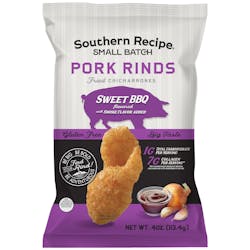John B. Sanfilippo & Son, Inc. announced operating results for its fiscal 2012 second quarter. Net income for the second quarter of fiscal 2012 was $9.4 million, or $0.87 per share diluted, compared to net income of $5.2 million, or $0.48 per share diluted, for the second quarter of fiscal 2011. Net income for the first two quarters of fiscal 2012 was $11.8 million, or $1.09 per share diluted, compared to net income of $6.3 million, or $0.58 per share diluted, for the first two quarters of fiscal 2011.
Net sales of $223.3 million for the second quarter of fiscal 2012 were virtually unchanged from net sales of $223.6 million for the second quarter of fiscal 2011. Sales volume, which is measured as pounds sold, decreased by 13.0 percent.
Despite the decline in sales volume, net sales remained constant due to price increases that were implemented over the last 12 months for virtually all of the products that the company sells. The decrease in sales volume in the quarterly comparison occurred primarily in the consumer distribution channel and decreased to a lesser extent in all other distribution channels.
Sales volume declined for all major products except fruit and nut mixes. The sales volume decline in the quarterly comparison was mainly attributable to the impact of higher selling prices on consumer demand for the company’s products. The decline in sales volume was also attributable in part to the loss of business with three private label customers who elected not to accept price increases.
The gross profit associated with this lost business was not significant. The sales volume attributable to this lost business accounted for approximately 18 percent of the total sales volume decline. Limited supplies of walnuts and pecans also contributed to the total sales volume decline.
For the first two quarters of fiscal 2012, net sales increased to $380.1 million from $370.4 million for the first two quarters of fiscal 2011. The increase in net sales in the year to date comparison was also attributable to price increases. Sales volume decreased by 10.4 percent. As was the case in the quarterly comparison, the decrease in sales volume in the year to date comparison occurred primarily in the consumer distribution channel and decreased to a lesser extent in all other distribution channels.
Sales volume declined for all major products except almonds. The sales volume decline in the year to date comparison was mainly attributable to the impact of higher selling prices on consumer demand for the company’s products. The decline in sales volume was also attributable in part to the loss of business with three private label customers who elected not to accept price increases. The gross profit associated with this lost business was not significant. The sales volume attributable to this lost business accounted for approximately 29 percent of the total sales volume decline. Limited supplies of walnuts and pecans also contributed to the total sales volume decline.
The gross profit margin, as a percentage of net sales, increased to 15.9 percent for the second quarter of fiscal 2012 from 12.2 percent for the second quarter of fiscal 2011. The gross profit margin, as a percentage of net sales, increased to 15.1 percent. for the first two quarters of fiscal 2012 from 12.9 percent for the first two quarters of fiscal 2011. The increase in the gross profit margins in the quarterly and year-to-date comparisons was almost entirely attributable to an improvement in the alignment of selling prices and acquisition costs.
Total operating expenses for the second quarter of fiscal 2012 increased to 8.8 percent of net sales from 7.8 percent of net sales for the second quarter of fiscal 2011. Total operating expenses for the first two quarters of fiscal 2012 increased to 9.5 percent of net sales from 9.3 percent of net sales for the first two quarters of fiscal 2011. The increase in total operating expenses, as a percentage of net sales, in the quarterly and year to date comparisons was mainly attributable to recording incentive compensation expense, which was not incurred in the same periods in fiscal 2011, and an increase in marketing and promotional expense.
The increases in these expenses were partially offset by decreases in freight expense due to lower sales volume and broker commissions expense due primarily to a shift in customer mix. Additionally, total operating expenses for the second quarter of fiscal 2011 were favorably impacted by an insurance settlement related to the fiscal 2009 pistachio recall and by the forfeiture of amounts previously accrued for incentive compensation. These reductions in total operating expenses for the second quarter of fiscal 2011 were offset in part by increases in operating expenses for litigation accruals and the projected earn-out payments related to the company’s acquisition of Orchard Valley Harvest, Inc. The net impact of these four items on total operating expenses for the second quarter of fiscal 2011 was a reduction of $0.9 million. The net impact of these four items on total operating expenses for the first two quarters of fiscal 2011 was insignificant.
Interest expense for the second quarter of fiscal 2012 declined to $1.3 million from $1.6 million for the second quarter of fiscal 2011. Interest expense for the first two quarters of fiscal 2012 was $2.6 million compared to $3.1 million for the first two quarters of fiscal 2011. The decrease in interest expense in both the quarterly and year to date comparisons was attributable primarily to lower average short-term borrowings. The decline in short-term borrowings occurred mainly because of delayed deliveries of pecans due to a late harvest.
The total value of inventories on hand at the end of the second quarter of fiscal 2012 decreased by $4.9 million or 3.0 percent as compared to the total value of inventories on hand at the end of the second quarter of fiscal 2011. The quantity of raw nut input stocks on hand at the end of the second quarter of fiscal 2012 decreased by 22.2 percent when compared to the quantity of raw nut input stocks on hand at the end of the second quarter of fiscal 2011.
The weighted average cost per pound of raw nut input stocks on hand at the end of the second quarter of fiscal 2012 increased by 25.1 percent as compared to the weighted average cost per pound of raw nut input stocks on hand at the end of the second quarter of fiscal 2011 mainly because of significantly higher acquisition costs for most major tree nuts and peanuts. The value of finished goods inventory on hand at the end of the second quarter of fiscal 2012 decreased by 7.7 percent as compared to the value of finished goods on hand at the end of the second quarter of fiscal 2011 because of a 13.7 percent decline in the quantity on hand.
“Net income improved significantly in the quarterly comparison as gross profit margins returned to targeted levels for the majority of the products that we sell. The improvement in gross profit margins occurred as a result of our efforts to improve the alignment of selling prices and acquisition costs,” explained Jeffrey T. Sanfilippo, chairman and chief executive officer in a prepared statement. “Higher selling prices and difficult economic conditions combined to have a negative impact, not only on consumer demand for many of our products, but also on the nut category as a whole,” Sanfilippo noted. “For example, Nielsen data for total category volume sales in the United States food, drug and mass merchandise channels show declines of 10.4 percent for snack nuts and 11.5 percent for baking nuts for the fourth calendar quarter of 2011 compared to 2010. Our sales volume decrease in the consumer distribution channel in the quarterly comparison that was attributable to the impact of higher selling prices was similar to the volume decline in the total category data,” Sanfilippo stated. “Market prices for most nuts remain at historically high levels. We anticipate that walnut and peanut market prices may continue to increase due to increased global demand and shortages, respectively, while market prices for cashews should begin to decline by the end of our third quarter,” Sanfilippo concluded




